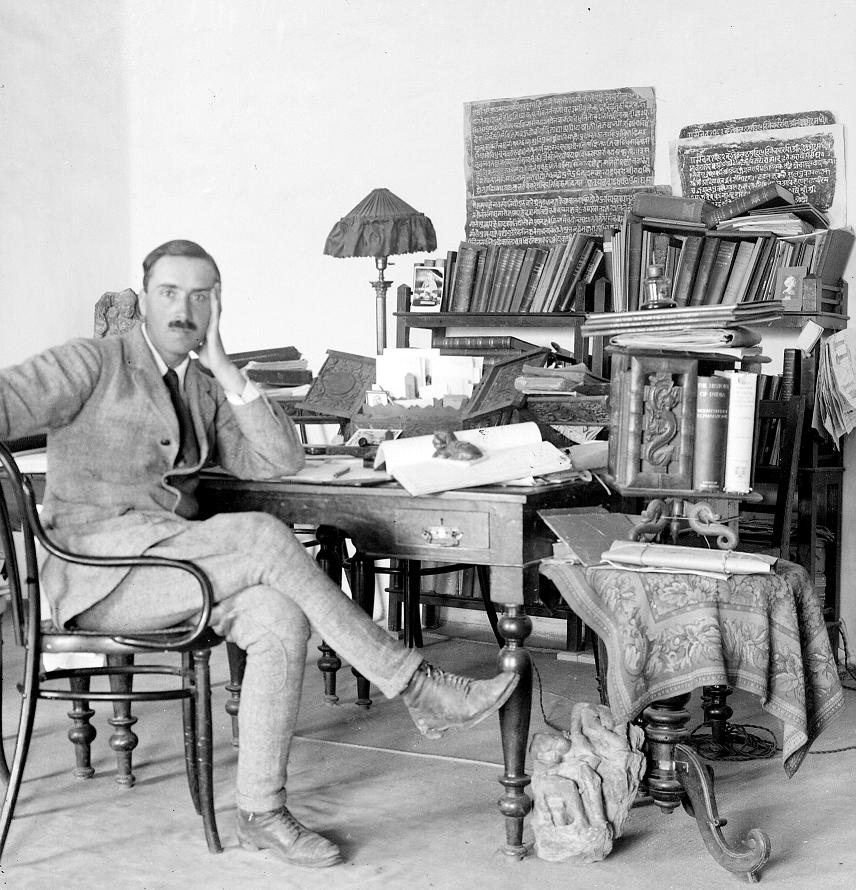New Delhi: Italy is renewing its historical ties with India by commemorating the legacy of one of its iconic Oriental scholars and Indophiles Luigi Pio Tessitori, who unearthed the Indus Valley site of Kalibangan in Rajasthan in the early 20th century.

Tessitori, who was born in Udine in Italy in 1887, died of pneumonia in Bikaner in 1919 at the age of 32. He documented the Bardic traditions of Rajasthan as a photographer and researched extensively on “Ramayana”, on which he wrote comparative treatises.
It was while studying the ancient civilisations and history of India that Tessitori discovered that some ruins around Bikaner showed a pre-Mauryan character dating back to the Indus Valley. He sought the help of John Marshall of the Archaeological Survey of India and identified it as an ancient civilisation of Harappan lineage.
The site was later known as Kalibangan.
Tessitori, who is kind of a local hero in Bikaner – with a landscaped grave and a bust in the city – was invited to Bikaner by former ruler, Ganga Singh. The Italian carried the ancient culture and traditions of India to his homeland at a time when awareness about the country’s rich heritage was poor in Italy between 1900-1914.
His works were subsequently published in both Italian and English. They were preserved in both Italy and India.
Tessitori, who was a scholar of Sanskrit, Pali, Prakrit and Marwari, was also a collector of Indian antiquities and manuscripts. He explored nearly 100 historical sites in Rajasthan and decoded ancient inscriptions.
The mayor of Udine, Furio Honsell, an authority on Tessitori and his work, said he was determined to “connect Bikaner and Udine as twin cities in memory of Tessitori’s work”.
“Several years ago, the government of Italy had initiated the process to declare Udine and Bikaner twin cities. The process never really came through because of bureaucratic tangles. I am determined to revive it and take it up with the government of Italy and Rajasthan,” said Furio Honsell in the capital.
This Indo-Italian exchange will continue through October with an exhibition of Islamic paintings and artefacts, “Akbar: The Great Emperor of India”, that will open at Palazzo Sciarra, Fondazione Roma Museo Oct 22.
It is a collaboration between the National Museum in New Delhi and the Italian government, the Italian envoy to India Giacomo Sanfelice Di Monteforte said.
An exhibition of about 60 rare photographs of Indian freedom fighter and founder of the Ghadar Party Pandurang Khonkoje by early Italian modernist and revolutionary Tina Modotti also opened at the Italian Cultural Centre Tuesday with the support of the Mexican and Italian governments.
–IANS
The opinions, beliefs and viewpoints expressed by authors, news service providers on this page do not necessarily reflect the opinions, beliefs and viewpoints of Hill Post. Any views or opinions are not intended to malign any religion, ethnic group, club, organization, company, or individual.
Hill Post makes no representations as to the accuracy or completeness of any information on this site page.



